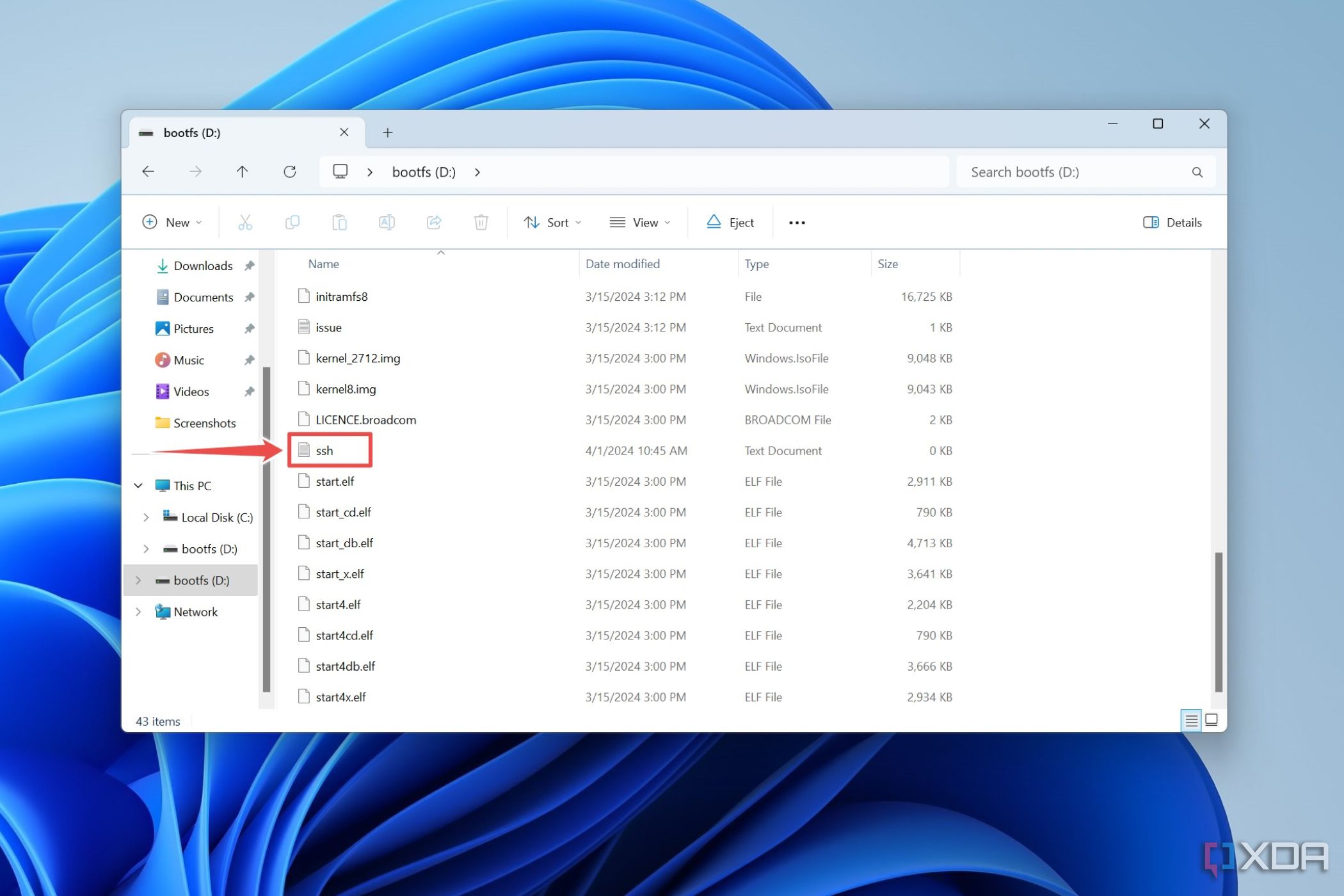Mastering SSH RemoteIoT On Raspberry Pi: A Beginner's Guide
Hey there tech enthusiasts, let's dive straight into the world of SSH RemoteIoT on Raspberry Pi. If you're looking to unlock the true potential of your Raspberry Pi, then SSH is your golden ticket. This powerful tool allows you to remotely control and manage your device, even from the comfort of your couch or from another corner of the globe. So, buckle up and get ready to learn how to harness this incredible technology!
Now, if you're anything like me, the thought of remotely accessing a device sounds like magic. But trust me, it's not as complicated as it seems. SSH stands for Secure Shell, and it's a protocol that gives you secure access to your Raspberry Pi from any location. Whether you're a beginner or an advanced user, this guide will walk you through everything you need to know.
Before we dive deeper, let's talk about why SSH RemoteIoT on Raspberry Pi is such a game-changer. It’s not just about convenience; it's about efficiency, security, and flexibility. Whether you're managing servers, running IoT projects, or simply tinkering with your setup, SSH makes it all possible. So, let's get started!
- 60yearold Women Hairstyles That Embrace Your Inner Fabulousness
- Hairstyles For Round Faces Over 50 Finding Your Perfect Look
What is SSH RemoteIoT on Raspberry Pi?
SSH RemoteIoT on Raspberry Pi is essentially the process of securely accessing your Raspberry Pi from a remote location. Think of it as a virtual bridge that connects you to your device without the need for physical presence. This setup is particularly useful for IoT projects, server management, and automating tasks.
SSH works by establishing an encrypted connection between your computer and the Raspberry Pi. This ensures that all data exchanged between the two devices is secure, even when you're using public networks. The best part? It's incredibly easy to set up, and once you've got it running, you'll wonder how you ever lived without it.
Why Use SSH for Your Raspberry Pi?
There are several reasons why SSH is the go-to solution for remote access on Raspberry Pi. Firstly, it's secure. Unlike other methods, SSH encrypts all communication, making it nearly impossible for unauthorized users to intercept your data. Secondly, it's efficient. You can execute commands, transfer files, and manage configurations with ease.
- Design Haircuts For Ladies The Ultimate Guide To Finding Your Signature Look
- Hairstyles Cuts The Ultimate Guide To Finding Your Perfect Look
Additionally, SSH is versatile. It supports a wide range of applications, from simple file transfers to complex automation scripts. Whether you're a hobbyist or a professional developer, SSH offers the tools you need to get the job done.
Setting Up SSH on Your Raspberry Pi
Step 1: Enable SSH on Raspberry Pi
The first step in setting up SSH is to enable it on your Raspberry Pi. You can do this by navigating to the Raspberry Pi Configuration tool. Once there, head over to the Interfaces tab and select "Enabled" under SSH. Easy peasy, right?
Alternatively, you can enable SSH via the terminal by typing the following command:
sudo raspi-config
From there, follow the prompts to enable SSH. Once enabled, your Raspberry Pi will be ready to accept remote connections.
Step 2: Find Your Raspberry Pi's IP Address
To connect to your Raspberry Pi remotely, you'll need its IP address. You can find this by typing the following command in the terminal:
hostname -I
This will display your Raspberry Pi's IP address, which you'll need to enter when setting up the SSH connection from your computer.
Connecting to Your Raspberry Pi via SSH
Now that SSH is enabled and you have your Raspberry Pi's IP address, it's time to connect. On your computer, open a terminal or an SSH client like PuTTY. Then, type the following command:
ssh pi@your_raspberry_pi_ip_address
Replace "your_raspberry_pi_ip_address" with the actual IP address of your Raspberry Pi. You'll be prompted to enter your Raspberry Pi's password, and once authenticated, you'll gain access to the device.
Tips for Secure SSH Connections
While SSH is inherently secure, there are a few additional steps you can take to enhance its security:
- Change the default password for the "pi" user to something more complex.
- Disable password authentication and use SSH keys instead.
- Limit access to specific IP addresses by configuring your firewall.
By implementing these measures, you can ensure that your Raspberry Pi remains protected from unauthorized access.
SSH RemoteIoT: Applications and Use Cases
SSH RemoteIoT on Raspberry Pi has a wide range of applications. Here are a few examples:
- Home Automation: Control smart devices in your home remotely.
- Server Management: Manage web servers, databases, and other backend systems.
- IoT Projects: Develop and deploy IoT solutions with ease.
- File Transfers: Transfer files securely between your computer and Raspberry Pi.
The possibilities are endless, and with SSH, you have the power to bring your ideas to life.
Troubleshooting Common SSH Issues
Even the best-laid plans can hit a snag. Here are some common SSH issues and how to resolve them:
- Connection Refused: Ensure that SSH is enabled and that your Raspberry Pi is connected to the network.
- Incorrect Password: Double-check your credentials and ensure that your password is correct.
- Timeout Errors: Verify that your Raspberry Pi's IP address is correct and that there are no network issues.
If you encounter any issues, don't panic. Most problems can be resolved with a bit of troubleshooting and patience.
Advanced SSH Configurations
Using SSH Keys for Authentication
One of the most secure ways to authenticate SSH connections is by using SSH keys. Here's how you can set it up:
- Generate an SSH key pair on your computer using the following command:
- Copy the public key to your Raspberry Pi using the following command:
- Disable password authentication by editing the SSH configuration file:
- Set
PasswordAuthenticationtonoand restart the SSH service:
ssh-keygen
ssh-copy-id pi@your_raspberry_pi_ip_address
sudo nano /etc/ssh/sshd_config
sudo systemctl restart ssh
With SSH keys in place, your connections will be more secure and seamless.
SSH RemoteIoT: Best Practices
To make the most out of SSH RemoteIoT on Raspberry Pi, here are some best practices to follow:
- Regularly update your Raspberry Pi's operating system and software.
- Monitor your SSH logs for any suspicious activity.
- Limit the number of failed login attempts to prevent brute-force attacks.
By adhering to these practices, you can ensure that your Raspberry Pi remains secure and performs optimally.
Conclusion
And there you have it, folks! SSH RemoteIoT on Raspberry Pi is a powerful tool that opens up a world of possibilities. From remote access to secure file transfers, SSH makes managing your Raspberry Pi a breeze. So, whether you're a beginner or an advanced user, don't hesitate to explore the endless potential of SSH.
Now, it's your turn! Share your thoughts, ask questions, or tell us about your own SSH adventures in the comments below. And if you found this guide helpful, don't forget to share it with your fellow tech enthusiasts. Together, let's build a community of Raspberry Pi wizards!
Table of Contents
- What is SSH RemoteIoT on Raspberry Pi?
- Why Use SSH for Your Raspberry Pi?
- Setting Up SSH on Your Raspberry Pi
- Connecting to Your Raspberry Pi via SSH
- Tips for Secure SSH Connections
- SSH RemoteIoT: Applications and Use Cases
- Troubleshooting Common SSH Issues
- Advanced SSH Configurations
- SSH RemoteIoT: Best Practices
- Conclusion
- Pictures Of Short Hair For Women Over 50 Embrace Your Bold Side
- Low Maintenance Short Over The Ear Haircuts The Ultimate Guide To Stylish And Effortless Looks

Raspberry Pi How to enable SSH

How to SSH into Raspberry Pi for Remote Access on Windows

Unlocking The Power Of Remote Ssh Raspberry Pi A Comprehensive Guide